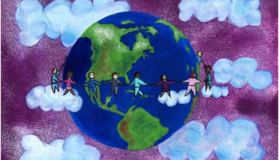Definition of Culture
下一节
Text B The definition of culture
Different definitions:
1. Culture is the total way of living of particular groups of people.——Edward, Taylor
2. Culture is the deposit of knowledge, experience, beliefs, values, actions, attitudes, hierarchies, religions, notions of time, roles, spatial relations, concepts of the universe, and artifacts acquired by a group of people in the course of generations through individual and group striving.(textbook P.13)


